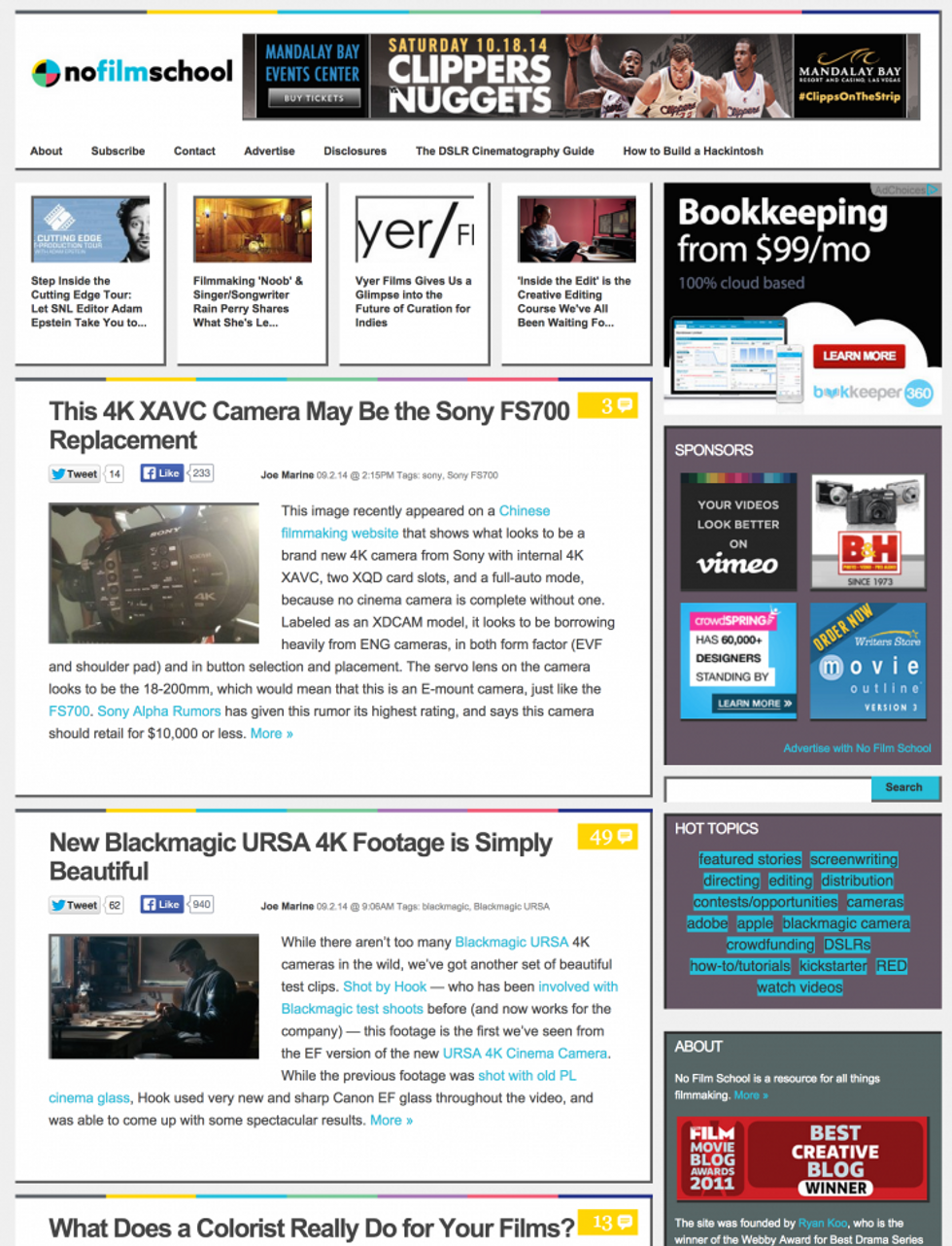Welcome to the New No Film School!
Today, we are relaunching No Film School as the leading worldwide community of filmmakers, video producers, and independent creatives. The new No Film School is where filmmakers can learn from each other — “no film school” required.

I originally launched this site as my personal blog. 70 million pageviews later, it can be so much more. So the new No Film School is no longer “just” a blog, but a full-fledged community site.
This relaunch is also a restatement of why I started this site in the first place. Why is it called "no film school?” Because not everyone can go to film school. We believe filmmakers around the world should have access to ongoing film education and opportunities — not just those who live near, or can afford, film school. Thus, with this new site we strive to create the kind of global community that can help filmmakers, video producers, and creatives learn from each other. That’s why our focus is on building the best community we can. We hope you’ll join us.
Quick Start
- Hit the Login button at the top right and fill out your profile. Claim your URL now!
- Review our new Community Guidelines.
- Check out our topics — over 4,000 articles are now categorized for whatever field in film you’re interested in.
- Browse the discussions, and ask and answer questions.
Site Tour
Profiles
Everyone gets a profile page to call home now. You can prominently share a video/reel of yours, add links to your own sites and social networks, enter your bio, and track your latest activity on the site. We are now a real names site. “NFS Score” is something we’re launching in beta — see our Community Guidelines for more details on the point system.
Homepage
We’re still doing some work on the new homepage to give us several different takes on the featured content stage. We’ll have a few different ways to slice the stage to keep everything fresh, and then further down is the reverse-chronological blog order everyone is familiar with, with posts from the boards right there on the homepage. This is a page we’ll iterate on in the months and years to come to give us more ways to shuffle the content (two current examples: “In Case You Missed It” at the bottom, and a featured story in the header).
Search
For years, our search and archives were broken; now we have a global search bar that brings in all the new content types and over 4,000 articles from the archives, and starts showing results as soon as you start typing. We still have some work to do on the search results pages — for now the key is to hit “Enter” to see all results, and then use the “View All” link next to the content type you’re looking for.
Topics
Everything is now sorted into organized Topics. The organizing principle of the new site is that, instead of creating an unmanageable number of sub-forums, we have broader categories (e.g. “Editing & Post-Production”) and then within each of those we use tags to offer more granular exploration (e.g. “Premiere Pro”). These topics and tags apply not only to articles, but also to discussions and questions, and you can filter through anything with them. Note we have over 5,000 tags to sort through from the old site, so give us a bit of time to get those straightened out!
Articles
Finally, most people think the front door of a website is the homepage, but for most visitors it’s really the article page. Our new article page is clean, focused, and puts the focus on the text and videos — there isn’t even a sidebar to distract you from the content itself. Scroll all the way down to the threaded comments and you’ll find our custom “you might like” engine surfaces articles.
Thanks
I’d like to thank J, David, Cassidy, Molly, and Matthew at Athletics for their brilliant design work, as well as Jason and Rich at Enabled for their exceptional development of the site. I started searching for designers nearly two years ago, so this was a long road — but it was worth the search in order to find the right collaborators (as any filmmaker knows). I could not be happier about where we are today, and where we’re heading tomorrow.

I’d also like to thank the old site for holding it together for so long — at last count we were running 38 plugins inside of a precarious and overtaxed Wordpress install. It’s amazing the old site lasted this long, considering I slapped the design together in a week, on my laptop, almost five years ago. For posterity’s sake, I'm adding an image of what the old site looked like...
So long, and thanks for all the fish!
Finally, I’d like to thank all of you for being valuable members of our community… even when there were no community features. We’ve worked long and hard to build something that can make a real difference in all of our creative endeavors, but the platform is only as helpful as we make it for each other. So please join us, and let us know your thoughts!






 'Anora'Neon
'Anora'Neon Annie Johnson Kevin Scanlon
Annie Johnson Kevin Scanlon









